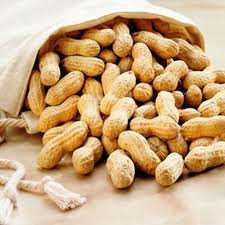GROUNDNUT
Groundnut (Arachis hypogaea L) is the most important oilseed-cum-food legume crop in the world. Sustainable groundnut production promotes food security and reduces malnutrition in a swelling population. Groundnut landraces are a potential source for sustainable groundnut breading. Land races of hypogaea, hirsuta, fastigiata, vulgaris, peruviana, and aequatoriana were collected from Peru, Mexico, and Brazil and showed rich genetic diversity with less oil content, higher sweet attributes, and the ability to sustain under adverse environmental conditions. The land races were cultivated by farmers using no inputs, namely fertilizers, pesticides, and water. These traditional varieties should be conserved and better employed in a breeding program to fulfill the objectives of producers. Several biotic (namely, foliar and fungal diseases, nematodes, and insect pests) and abiotic stresses (namely, drought, cold, and salinity) limit groundnut production. Development of resistant/tolerant cultivars to these stresses is the most economic method to achieve sustainable groundnut production. Molecular breeding approaches, namely, marker assisted breeding and genetic transformation helps to accelerate the breeding programme to develop high yielding cultivars with desirable attributes, through introgression of specific gene(s) identified in land races or compatible diploid wild species.
GROUND NUT OIL.
Groundnut oil is expressed from the seed of Arachis hypogaea L., commonly known as groundnut, peanut, or earth nut, because the seed develops underground. The plant is a legume native to South America and was cultivated as early as 2000–3000 bc. Today, groundnuts are produced on a significant basis in more than 30 different countries with world-wide production figures estimated in excess of 20 × 106 t. The three largest producers of groundnut are India, China, and the USA. In recent years, these countries accounted for approximately 65% of the world production. Although cultivated for many centuries, the economic importance of groundnuts and groundnut oil has increased rapidly only in the past century. Near the middle of the nineteenth century, oil mills in France began importing groundnuts from West Africa for crushing. Because of the excellent quality of groundnut oil, mills for crushing were soon found in other European countries and then throughout the world. In recent years, the world production of groundnut oil has accounted for about 7–10% of the world vegetable oil total. More than 50% of the groundnuts produced are crushed for oil. In India, 75–80% of the groundnuts produced are crushed for oil, whereas in the USA, groundnuts used for crushing are only approximately 12% of recent production. This low percentage is indicative of the economic importance of groundnuts as a food crop in the USA. Owing to their high content of digestible protein and unsaturated oil, and their exceptional roasted nutty flavor, groundnuts have substantial value and desirability as a food commodity. On a world-wide basis, more than one-third of the groundnuts produced are used as food. In the USA, a high percentage of the limited number of groundnuts used for oil extraction have been separated from edible stocks because of the potential for aflatoxin. The pressed cake, low in oil and high in protein, may be used for animal food if aflatoxin is found to be below acceptable levels. Unacceptable pressed cake is relegated to fertilizer usage. Depending on the extraction methods (hydraulic press, expeller, and/or solvent extractor), residue may contain 1–7% oil, and with inefficient equipment, the percentage may be much higher. Pressed cake from edible-grade groundnuts with low oil content may be ground into flour for human consumption. In many parts of the world, extraction efficiency and lack of hygienic conditions relegate residues unfit for human consumption. In these situations, the residue is utilized either for animal feed or as fertilizer.

.jpg)
.jpg)
Post a Comment